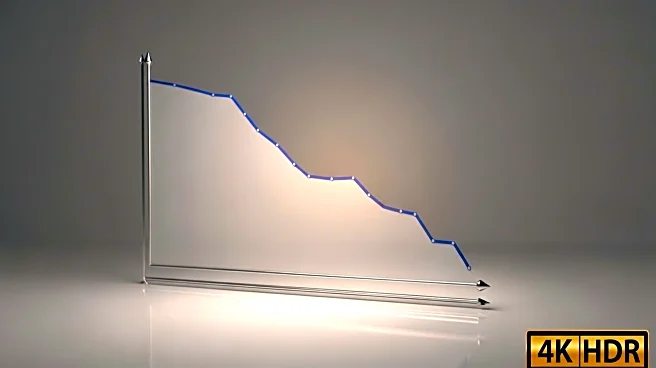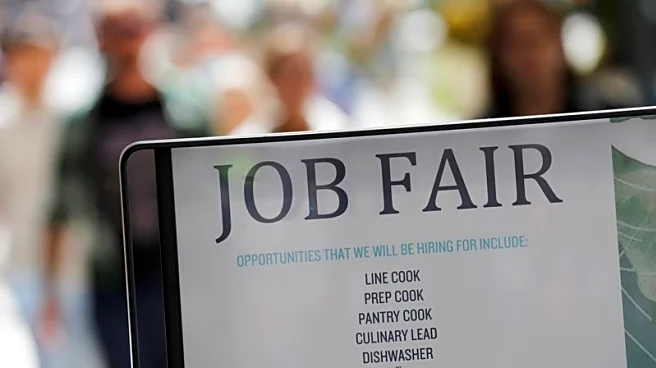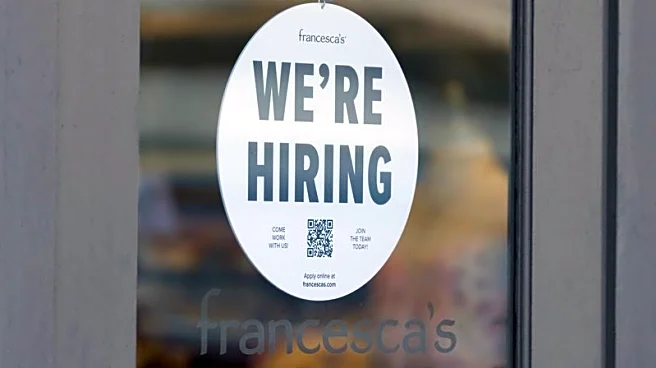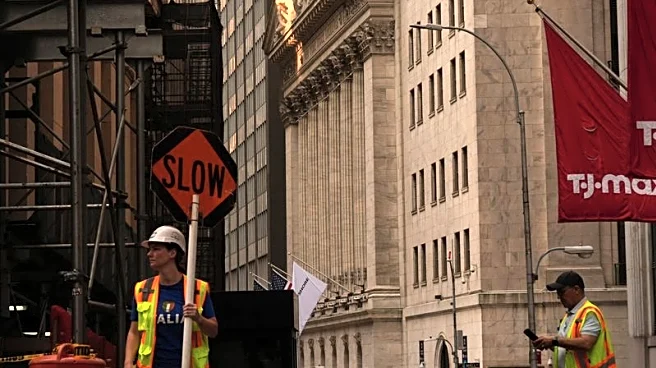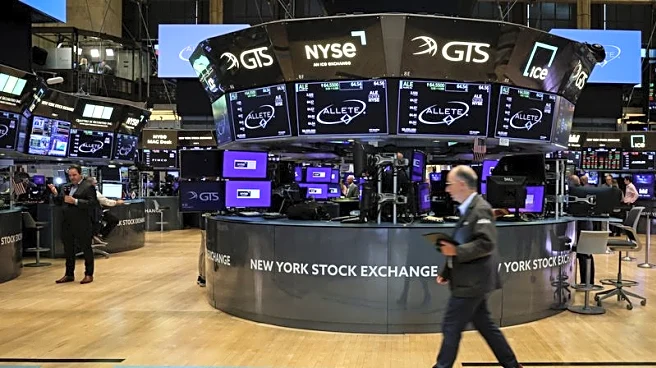What's Happening?
The U.S. labor market showed signs of cooling in July as job openings fell to 7.2 million, down from 7.4 million in June, according to the Labor Department's Job Openings and Labor Turnover Survey. This decline comes amid ongoing effects from interest rate hikes by the Federal Reserve and trade uncertainties under President Trump's administration. Healthcare and social assistance sectors saw significant reductions in job openings, with a decrease of 181,000, while retailers cut 110,000 positions. Despite the drop, the number of Americans quitting their jobs remained steady at 3.2 million, indicating some confidence in finding better opportunities. The labor market has been losing momentum, with job creation averaging 85,000 per month this year, a significant decrease from previous years.
Why It's Important?
The reduction in job openings signals a potential slowdown in economic growth, affecting various sectors and stakeholders. Employers are becoming cautious in hiring, reflecting uncertainties in the economic environment. This trend could impact consumer spending and overall economic stability, as fewer job opportunities may lead to reduced income and spending power. The labor market's cooling could also influence Federal Reserve policies, potentially affecting interest rates and economic strategies. Additionally, the political implications of the labor market's performance could affect public perception and policy decisions, especially with President Trump's recent actions regarding the Bureau of Labor Statistics.
What's Next?
The Labor Department is set to release unemployment and hiring figures for August, which are expected to show a modest improvement in job creation. However, the revisions to previous months' data and the firing of the Bureau of Labor Statistics head by President Trump could lead to further political and economic discussions. Stakeholders will be closely monitoring these developments to assess the labor market's trajectory and potential policy responses.
